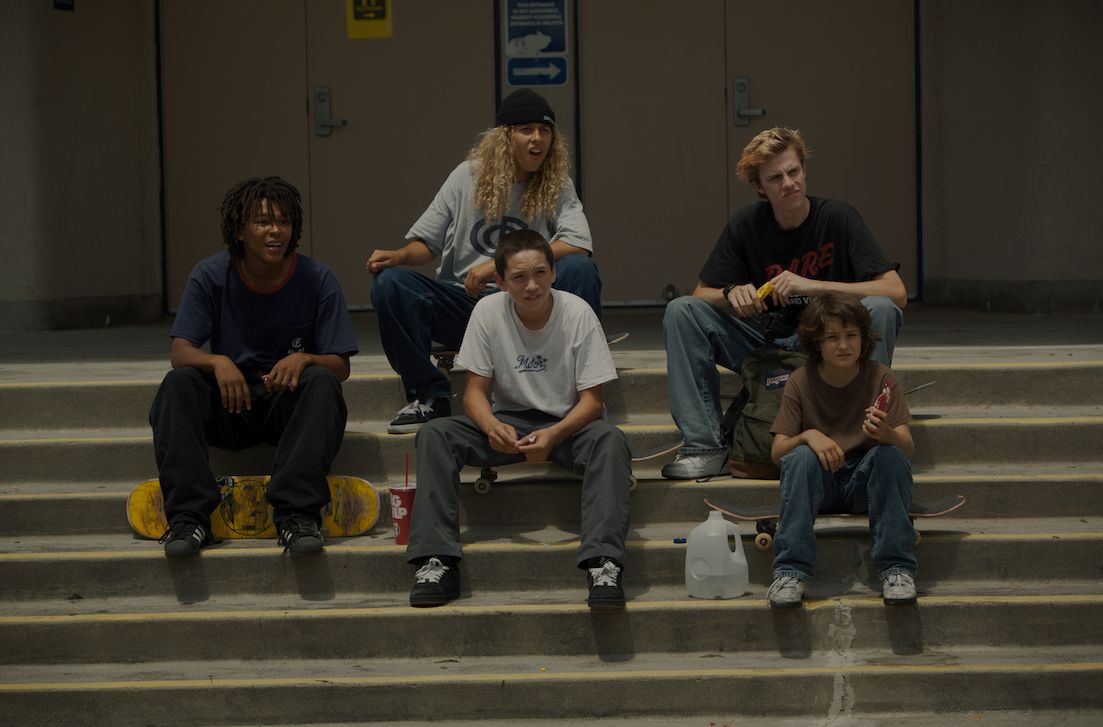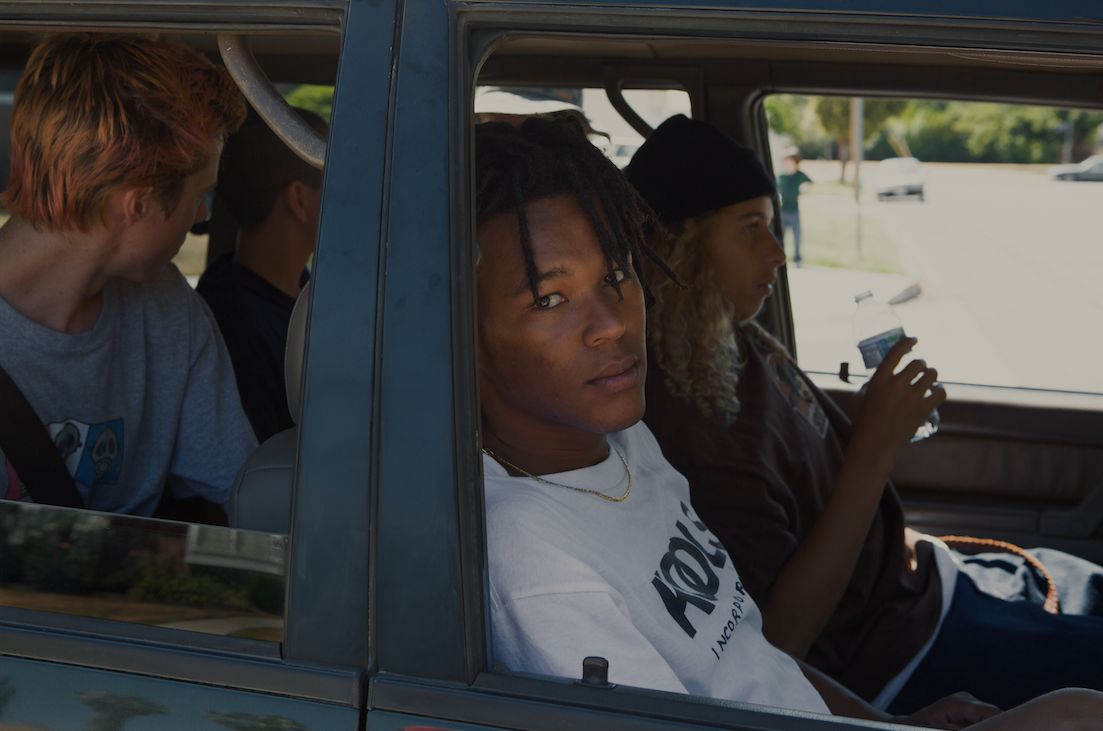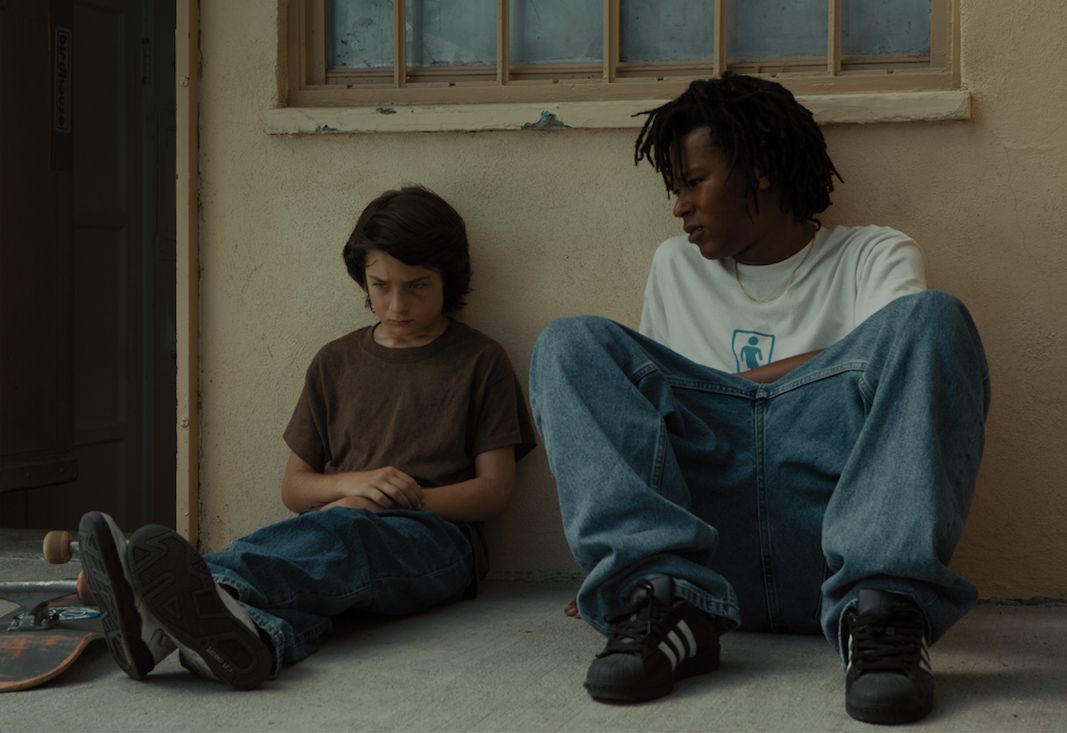Watching Jonah Hill’s new film, “Mid90s,” which came out Friday, I couldn’t shake how familiar the whole thing felt. There was something about the taco spot, the eggshell-colored alleyway behind the skate shop, the ginormous public school the kids sneak into, the fights and big hair and bland streets. Even the sup fools and fuck shits, the way the phrases don’t so much roll off the actors’ tongues as rattle out of their throats on the creaking Spitfire Bighead wheels of their u’s and o’s and i’s — even the vowels felt like home.
The movie, a “coming-of-age” “animal-kingdom” film about skateboarding in Los Angeles, according to Hill, is about a place as much as it is about the era alluded to in the title. Hill and his siblings were raised in Cheviot Hills, a ritzy neighborhood on Los Angeles’ Westside. “Mid90s” is certainly not set there. But it did feel a whole lot like the neighborhood next door, where I went to school when I was the same age as the film’s shy 13-year-old protagonist, Stevie.
“Are you serious?” Hill said when I told him that in the ’90s I had attended Palms Middle School, a large and diverse LAUSD public school in a Los Angeles neighborhood of the same name.
We were sitting in A24’s Manhattan office, a little over a week before the release of “Mid90s.” Hill had just returned from a cigarette outside and slipped on the requisite company hoodie, and now he was prepared to talk for exactly 20 minutes ― so said the PR guy ― about his passion project, which follows Stevie as he tries to earn the respect of four skateboarders he notices one day. But Hill was expansive, even inviting, over the course of our interview, particularly about the setting of “Mid90s,” an authentic slice of in-between Los Angeles.
Hill told me that he used to spend time around Palms Middle School and considers it the neighborhood where he really grew up. Speaking affectionately, with an Angeleno’s connoisseurship of the fine gradations of banality, he described Palms as “bland,” “almost colorless,” a “no man’s land” whose lack of distinctive character breeds subcultures.
While I gave up on skateboarding early on, the world Hill depicts felt in many ways like the very specific enclave of Los Angeles I knew. I remember standing silently and in shock as a undersized sixth-grader in my enormous school when a kid in the boy’s locker room asked aloud if anyone wanted to buy weed for the first time, just as I remember the first time I saw a large group of children surround two boys as they beat each other until they bled. I remember looking over at the skater kids, wishing they’d befriend me. And I remember when they later did, and we proclaimed ourselves the “Dream Team,” words I later got tattooed on my body, as did they. Like Stevie and his friends, we felt bigger than the small world we inhabited because of one another.
Hill feels similarly attached to the neighborhood, but gentrification in Palms forced Hill to film in the city of Montebello, which has retained something of its working-class character. But, he said, “I tried to recreate Palms the best I could” — the fictional Motor Avenue skate shop has to be a subtle nod to the real Motor Avenue, the street he lived on as a child. Had I ever been to the Hot Rod skate shop? he asked me. The Surplus Store on Venice Boulevard? The Cuban restaurant Versailles?
“This is how I grew up in Los Angeles. This is what I saw and what I wanted to celebrate,” he said.

The promotional line, advanced not least by Jonah Hill himself, is that Jonah Hill has grown up. He’s 34 years old now, a serious movie maker, less the cutup who angrily berates his friends to audiences’ delight. It seems appropriate that the film that betokens this new, adult Jonah Hill, while not exactly autobiographical, is a reckoning with the world of his adolescence.
To hear him tell it now, filmmaking was always the dream ― the acting career preceding it more something he “fell into and was blessed with” than anything else, he told me. Hill turned a friendship with Dustin Hoffman’s son into a bit role in “I Heart Huckabees,” before catapulting to fame and fortune when “Superbad” earned an astounding $170 million worldwide. Within a few years, he was doing movies for the Coen brothers, Duplass brothers, Quentin Tarantino and Martin Scorsese, earning two Academy Award nominations and planting his flag as a serious actor.
But even back in 2007, Hill was already telling people he hadn’t grown up wanting to be an actor. He looked at people who had charted their way from the comedy world and into serious filmmaking ― “people who were my heroes, like Mike Nichols or Barry Levinson,” he said ― and tried to figure out how he could do the same. He noticed something. “Usually their first films were things that were personal in some way,” he said.
A few years ago, Hill started work on a script about skateboarding in Los Angeles. Hill has described his childhood as “super emo” in certain ways ― he cried a lot as a kid, wasn’t the greatest student or best athlete ― but became deeply invested in the city’s skating subculture. “It just came into my life when I really needed it,” Hill said.
His favorite moment in the movie takes place at a makeshift skate park, where the children sit and speak to a homeless man ― played by the rapper Del the Funky Homosapien ― with a compassion for his situation that seems genuine. The scene, Hill said, is informed by some of Hill’s own experiences as a child.
“We all judge people,” Hill said. “It’s just that I felt that we didn’t judge people as much, and that helped me to become a less judgmental person.”
Sitting a few feet away from this soft and and reflective version of Hill, it’s hard to remember that this is the same guy who vaulted to fame just over a decade ago on the back of a film in which he called one of his co-stars “faggle,” or who, in 2014, called a paparazzi a “faggot.” Recently, he’s talked more openly about his insecurities and past mistakes. “I think that if I’d even done this two years ago, I wouldn’t have been emotionally mature enough,” he said.
“Mid90s” isn’t Hill’s own story. It couldn’t be. While most of the children in the film come from working-class homes, Hill attended Crossroads, an elite private high school in Santa Monica. And at its weakest moments, the film can feel like an exaggeration of the LAUSD experience. Stevie, played by Sunny Suljic, is seemingly prepubescent, yet we see him slam an entire 40-ounce in a bathroom shortly and get pulled into a room at a party by a much older teenage girl. While the movie might take some dramatic liberties with its characters, Hill’s choices here were thought through. With them, he is trying to work through an idea about the “misogyny” and “toxic masculinity” of a community he still holds close to him.
“The sexual experience in the film isn’t enjoyable” for Stevie, he said. “It only becomes enjoyable when he realizes it’s his currency to rise up within the group.”

Hill has a similar explanation for his decision to have the kids hurl homophobic slurs at one another throughout the film. Hill said he knows how “gnarly” and “uncomfortable” it is to hear the word “faggot” in the film, but explained that he felt he had to include the language to be true to the period he lived in.
The decision didn’t come without doubt. In a small moment of panic, Hill sent a last-minute scene to his producer, Scott Rudin. In it, Hill said, “someone says the f-word and then the other kids discuss whether they should be saying that or not.” Rudin, who is openly gay, hated it.
“He was like, ‘That’s so much more disrespectful. Did you guys ever have that conversation about whether you should be saying that or not?’” Hill said. “And I was like, ‘No, we were completely unaware of how fucked up it was.’ And he was like, ‘Then it’s super fucked up to rewrite history.’”
“These are all lessons I felt our generation had to unlearn ― and obviously in this time right now, we’re being forced to reckon with a lot of that,” he added. “It’s disgusting how people spoke, but it was how it was and hopefully we can see that and see that that needed to change.”
From the outside, Stevie’s set of friends appear to be bad students and authority-questioning degenerates from troubled households ― the exact kind of people Stevie’s mom, played by Katherine Waterston, wants him to avoid. But as the movie unfolds, we discover that they possess a moral code often overlooked by people outside their community.
Ray, played remarkably by Na-kel Smith, is one of the group’s older members. A quiet and thoughtful boy, he possesses clear ambition and dreams of exiting his current life through skateboarding. It pains him to watch as his oldest friend, the aptly named “Fuckshit” (Olan Prenatt), descends into something that looks like it will become substance abuse. At one point, when he sees the painfully young Stevie drinking alcohol once again, he quietly takes it from him and says he’s had enough. In the same scene, he walks over to two professional skaters to politely try and shoot his shot. The moment reminded me once again of my own friends, middling to poor students like Ray, who instead focused deeply on their ever-widening pursuits ― first skateboarding, then music, filmmaking and more.

Ever since I left Los Angeles in the mid-2000s, I have defended the city as more than just Hollywood Boulevard, Beverly Hills and an ocean. Outside of Los Angeles, I felt compelled to try and be my own miniature Jonathan Gold, representing the city as I knew it to be ― not just 9 million green juices and a workout class, but a wondrous metropolitan organism filled with myriad bland and beautiful cultures and subsections, as well as my supposedly degenerate friends. It ends up Hill felt much the same way.
“My parents were from the East Coast, so if I would ever go visit like my grandpa or whatever, people would always say ‘Surf’s up’ to me,” he said. “I was like, I’ve never been to the beach. I’ve literally never surfed.”
“Mid90s” is a pure product of the Angeleno diaspora. Like me, Hill lives in New York City now. And like me, Hill has held onto his own personal Los Angeles, retained some sense of its surfaces and contours, its cultures and subcultures. With his movie, Hill is arguing that the best areas of the city can be found at the in-betweens. And they’re best found early on, with friends. If you’re a Stevie, you could certainly do worse than to find yourself a Ray.
